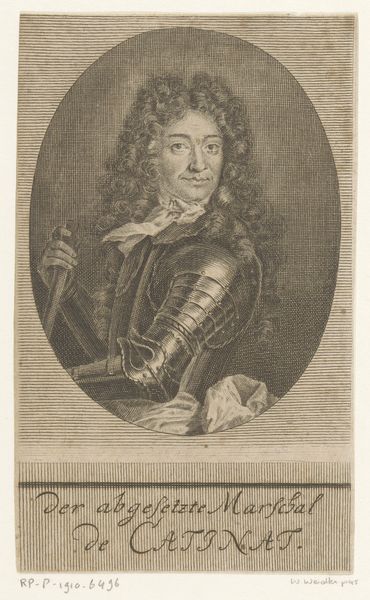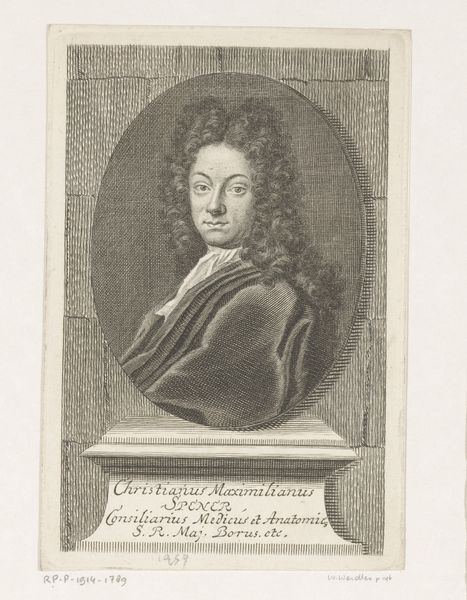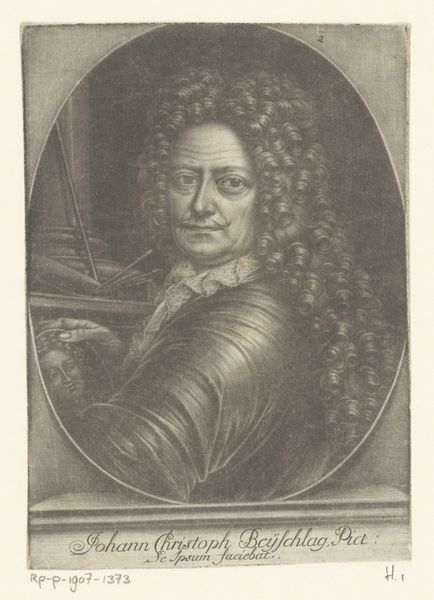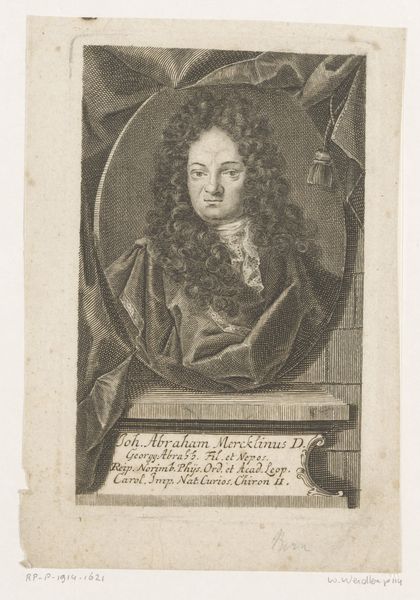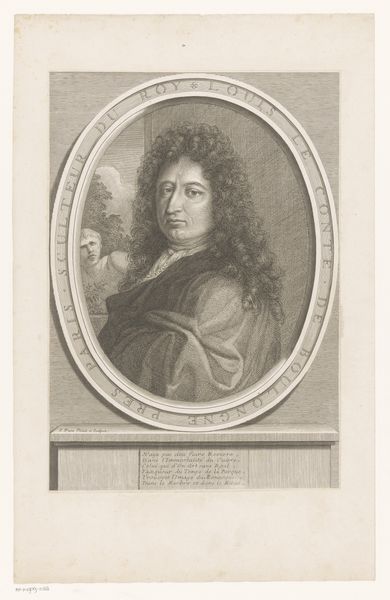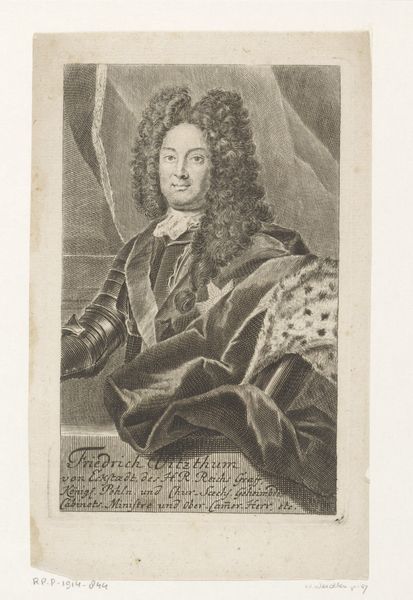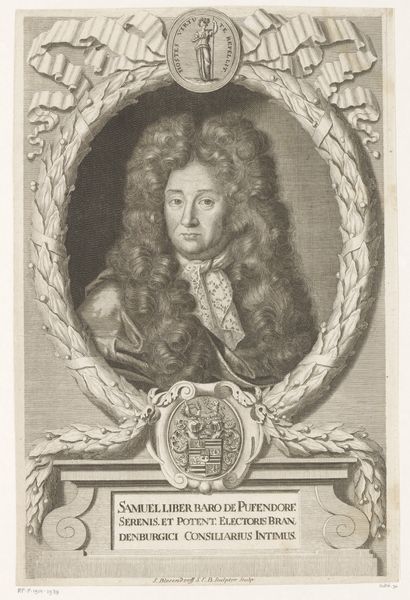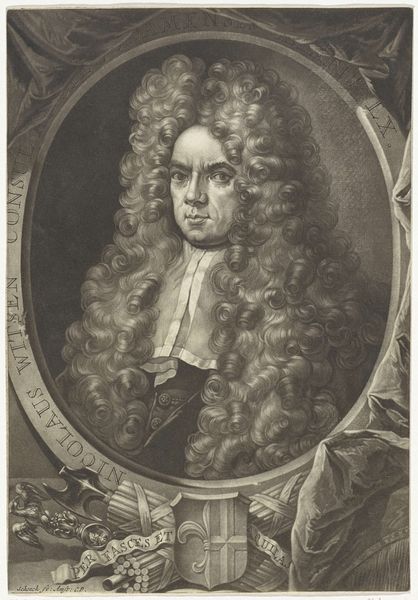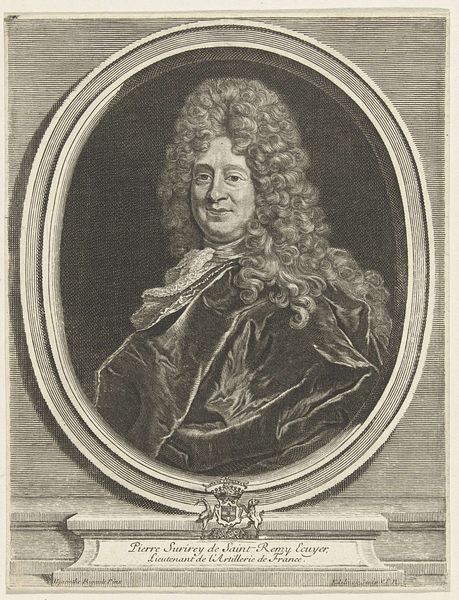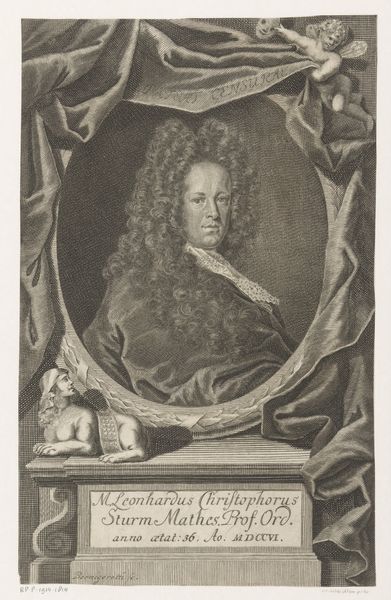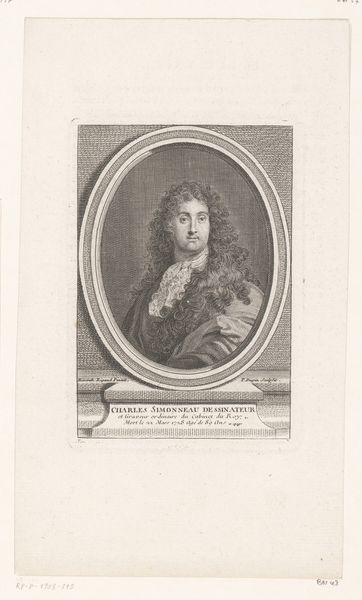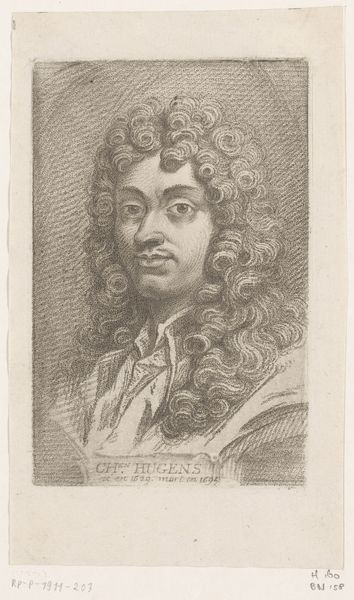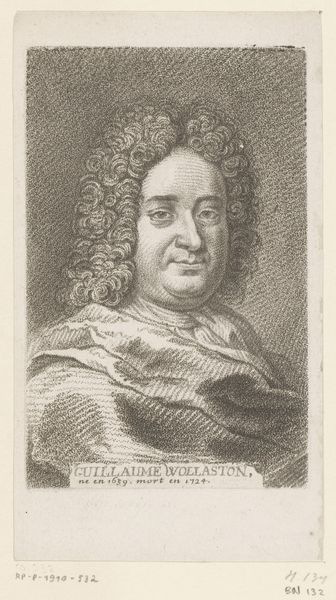
print, engraving
#
portrait
#
baroque
# print
#
old engraving style
#
engraving
Dimensions: height 124 mm, width 70 mm
Copyright: Rijks Museum: Open Domain
Editor: So, this is "Portret van Niccolò Castelli," made sometime between 1680 and 1733 by Martin Bernigeroth. It's an engraving, so a print. What strikes me is the very formal, almost staged feeling – very typical of Baroque portraiture, wouldn't you say? What's your take? Curator: Indeed. Baroque portraiture, particularly prints like this, served a very specific social function. These weren’t simply images; they were vehicles for constructing and disseminating identities, shaping public perception. Consider the wig: it's not merely fashion, it's a potent signifier of status, connecting Castelli to power structures and social hierarchies. How might this print have been circulated and used? Editor: Hmm, I imagine it could have been included in books, or sold individually to demonstrate a family’s connections or prestige? Curator: Exactly. These prints often functioned as social currency. Owning or commissioning a portrait like this could bolster one's position within the socio-political landscape. And consider the gaze – where do you think it situates the viewer? Editor: He’s looking slightly off to the side, as if he is seeing something we cannot. I would say this creates an idealised or superior version of Castelli. Curator: Precisely. Now, what about the inscription naming Castelli below? Editor: That firmly labels his status. Without it, he may have been seen as one of the mass, but because of the addition of his name, that makes him individual. Curator: Excellent observation. These details demonstrate how art of this era actively participated in constructing, negotiating, and reinforcing social hierarchies. These types of Baroque portraiture help inform how images functioned politically. Editor: That’s fascinating, I had not considered that an artwork's use could have this level of political meaning! Curator: It’s all about considering the public life of the image. We’re shaped by images, so those that circulated in earlier times played an even larger role in public opinion.
Comments
No comments
Be the first to comment and join the conversation on the ultimate creative platform.
